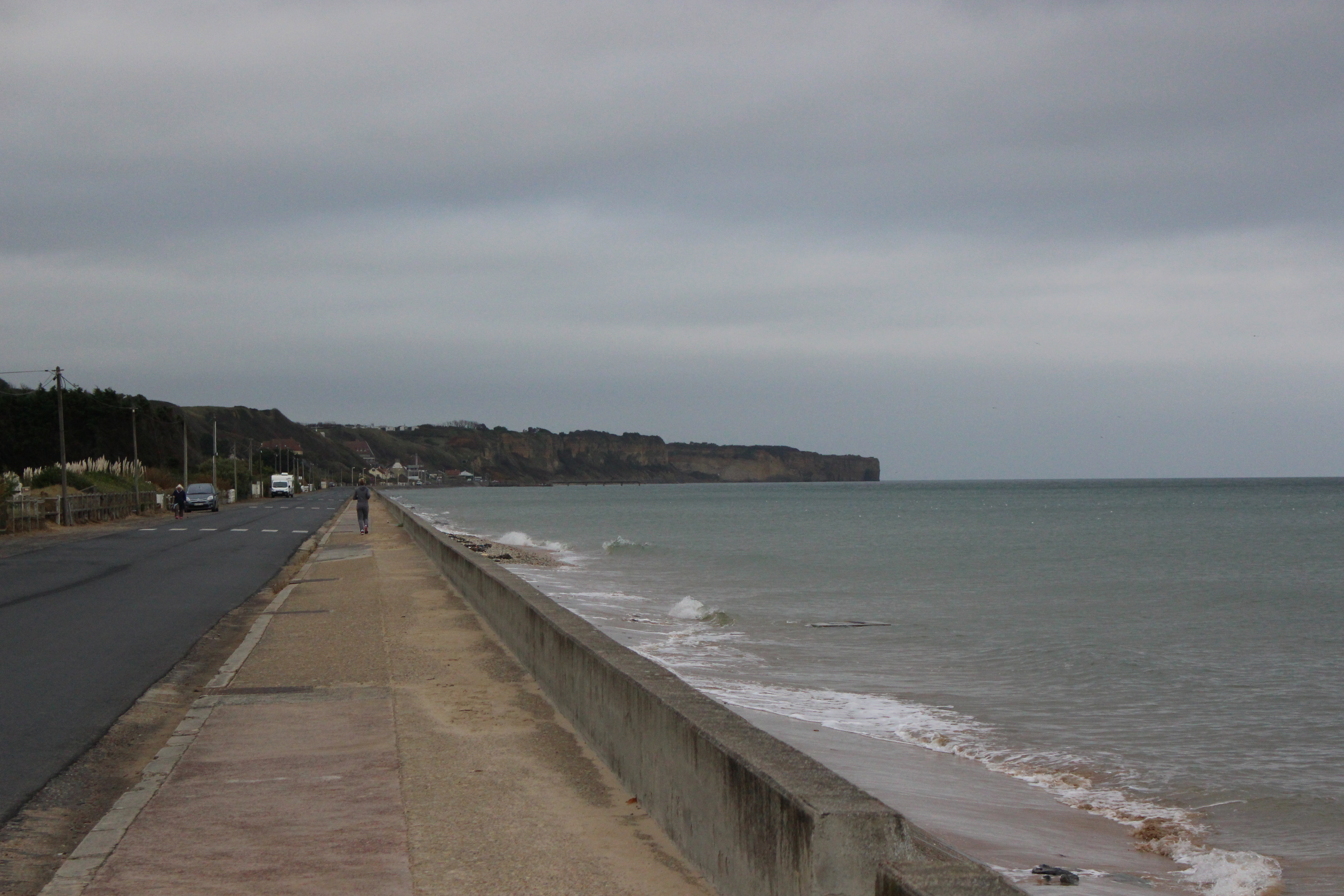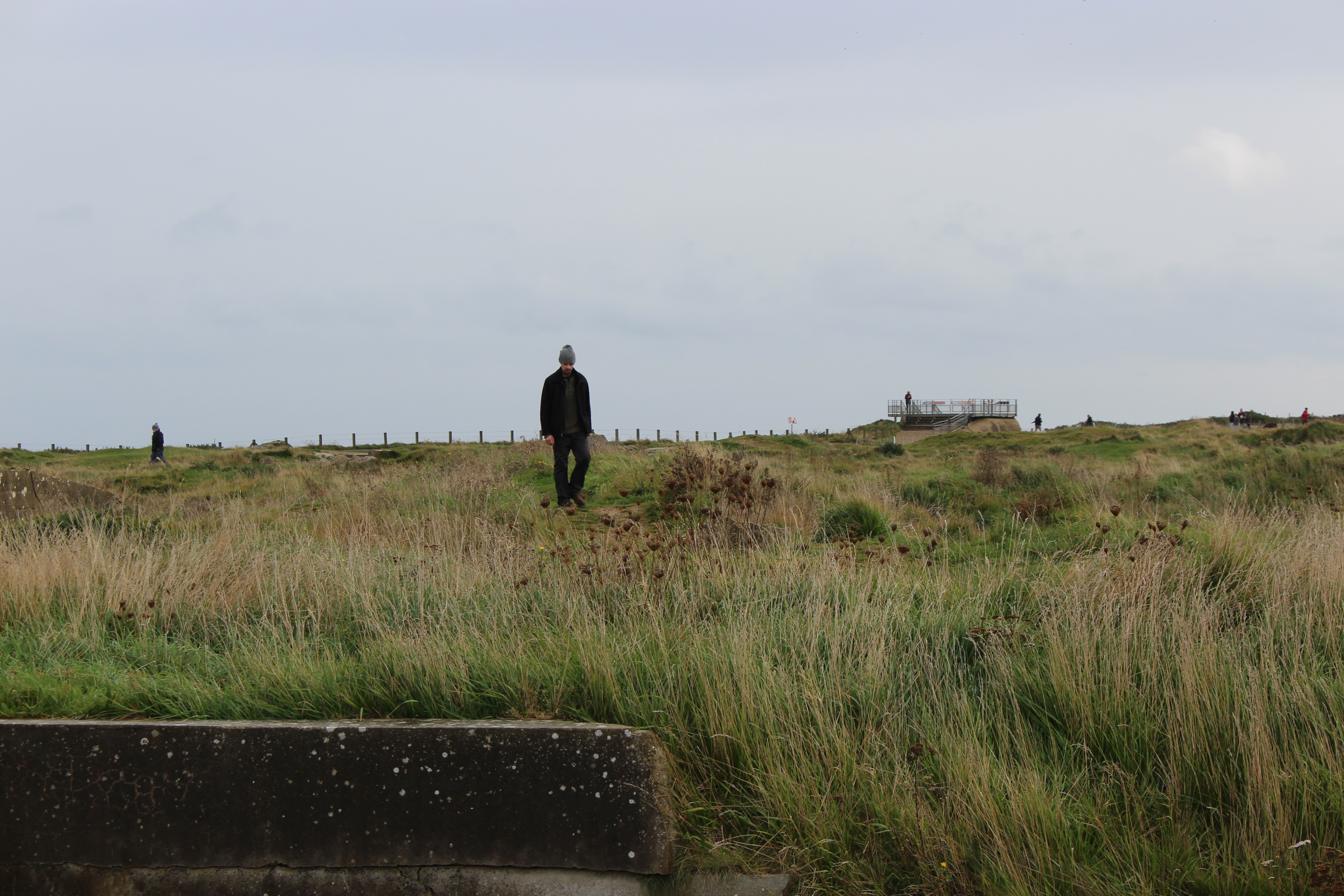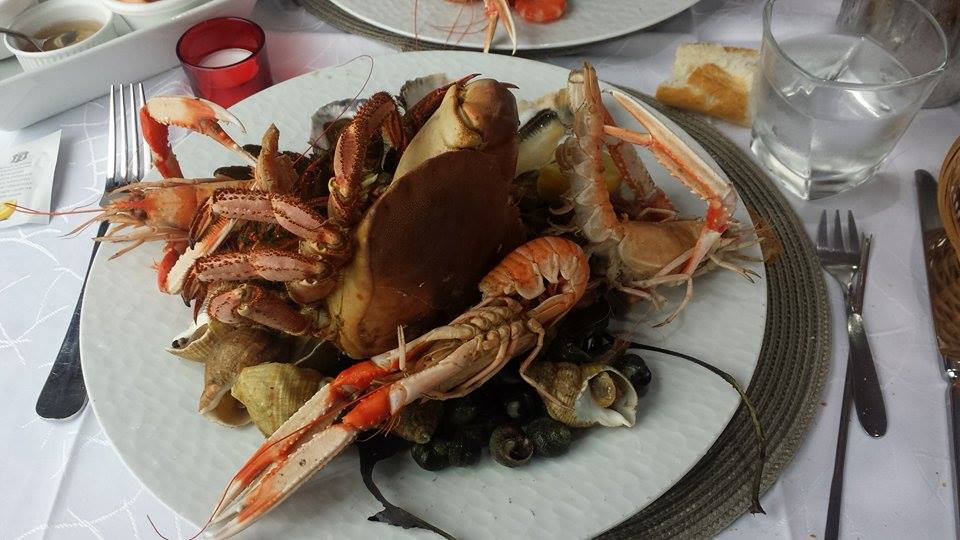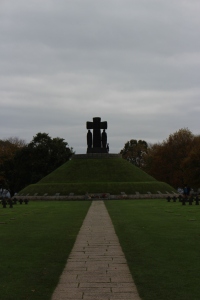The Traveling Pigeon, Part 3
November 2, 2015
by apaparis
Our final leg of touring around France ended on the beaches of Normandy. For me, this was the second time I walked along the shores where over 2,400 American men lost their lives.
The first time was during the summer I studied abroad in high school, a time when Normandy becomes touristy, crowded, and flooded with Americans wanting to see the historical sites. People crowded the beaches, local French families lay out their towels and enjoy the warm weather.
This time the beach was a very different place. High tide made walking on the sand an impossibility and the continuous rain and cold wind made the day dreary and somber. In a way it was fitting.
On top of the cliffs at Point du Hoc, the rain was harder and the bomb craters grown over with grass were muddy and not easy to walk in. While D Day actually occurred on a sunny day in June, the muddy grounds made the lofty cliff more conspicuous as a battlefield rather than a tourist attraction.
We didn’t spend the entire day looking at battlefields of course–lunch time become more important. What I missed on my last visit were the cute seaside towns near Omaha beach that bring in loads of seafood and shellfish every day from local fishermen and the rolling countryside beyond them.
We drove through the little towns and eventually found a seafood restaurant seemingly in a middle-of-nowhere town, but had somehow received attention from both the Culinary Institute of France and the Michelin Guide. Then we got to eat this:
Finally we visited the American and German cemeteries. The American cemetery is how you would imagine it: huge, exorbitant, and pretty, or as pretty as a cemetery can be. The American cemetery was trying to get a point across and they get it across very well. A lot of people died, all of them mattered, and all of them sacrificed everything to begin the liberation of France.
What’s a bit unnerving is the German cemetery.
First, all the gravestones are black and flat. A huge mound rises up in the center of the gravestones that is filled with the bones of unidentified soldiers. Two soldiers to every grave marker. No fuss, no grandeur, no pride. Just black, somber, heavy death. And it felt about as weird as it did the first time.
It’s odd to mourn for the “bad guys.” But it makes you remember that the boys, farmers, and old men who were pressed into the German army weren’t all Nazis, that nearly all of them were just humans trying to survive a poor life and the reign of a madman, and that WWII wasn’t a Western tragedy but a tragedy of humanity. That may be hard to remember in a world that teaches us to think of WWII as black and white, but it’s important to know the men in this graveyard aren’t the “bad guys.” They were men who need our tears and our thoughts just as much as any man from the cemetery of white crosses.









